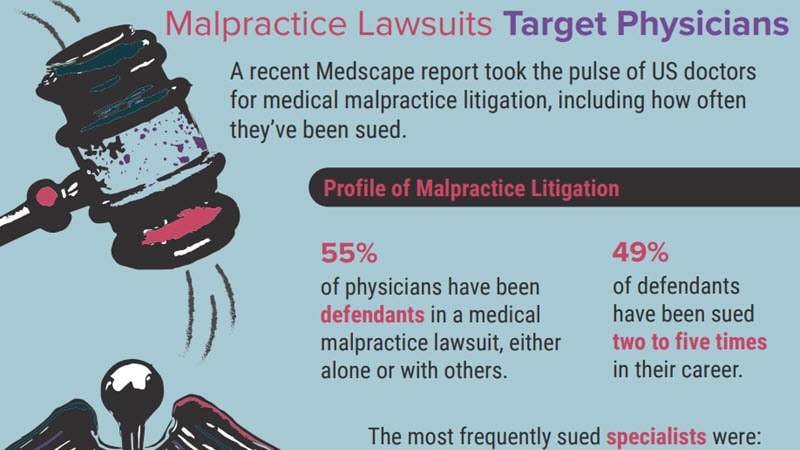Frequency and Costs of Malpractice Lawsuits Among US Physicians
Core Concepts
Physicians face high frequency and costs in malpractice lawsuits.
Abstract
This content delves into the frequency and insurance costs associated with malpractice litigation among US physicians. It highlights that just over half of US physicians have been involved in a medical malpractice lawsuit, with a significant portion being defendants multiple times. General surgeons, ob/gyns, and orthopedists are the specialties most targeted by plaintiffs. Additionally, around 31% of physicians pay $20,000 or more for annual malpractice premiums, and 41% find the costs unreasonable. The infographic is based on the Medscape Physicians and Malpractice Report 2023, providing valuable insights into this critical issue in the healthcare industry.
Infographic: The Frequency and Costs of Malpractice Lawsuits
Stats
Just over half of US physicians have been named in a medical malpractice lawsuit.
Around 31% of physicians pay $20,000 or more for annual malpractice premiums.
41% of doctors find the cost of malpractice insurance unreasonable.
Quotes
"Plaintiffs most often seem to go after general surgeons, ob/gyns, and orthopedists."
"41% of doctors said that the cost is not reasonable."
Key Insights Distilled From
by Jon Mckenna at www.medscape.com 11-03-2023
https://www.medscape.com/viewarticle/997680
Deeper Inquiries
How can the healthcare system better support physicians facing malpractice lawsuits?
Physicians facing malpractice lawsuits can be better supported by the healthcare system through various measures. Firstly, providing access to legal resources and support can help doctors navigate the complexities of the legal process. Offering emotional and mental health support is also crucial as lawsuits can take a toll on the well-being of healthcare professionals. Additionally, implementing clear communication and transparency protocols within healthcare institutions can help prevent misunderstandings that may lead to lawsuits. Moreover, creating a culture of learning from mistakes rather than blaming individuals can foster a more supportive environment for physicians facing malpractice lawsuits.
What are the potential drawbacks of focusing on the specialties most targeted by plaintiffs?
Focusing on specialties most targeted by plaintiffs in malpractice lawsuits may have several drawbacks. It can create a sense of fear and apprehension among healthcare professionals in these specialties, potentially leading to defensive medicine practices that prioritize avoiding lawsuits over patient care. This focus may also overshadow the need for systemic improvements in healthcare delivery that could prevent malpractice incidents across all specialties. Furthermore, it may perpetuate stereotypes and biases against certain medical specialties, impacting recruitment and retention of healthcare professionals in those fields.
How can social media platforms like Facebook, X, Instagram, and YouTube impact the discussion around malpractice lawsuits in the medical field?
Social media platforms like Facebook, X, Instagram, and YouTube can significantly impact the discussion around malpractice lawsuits in the medical field. These platforms provide a space for sharing information, experiences, and opinions on malpractice issues, potentially shaping public perception and awareness. Healthcare professionals can use social media to educate the public about the complexities of malpractice lawsuits and advocate for reforms in the legal system. However, misinformation and sensationalism can also spread rapidly on these platforms, leading to misconceptions and biases against healthcare providers. It is essential for healthcare organizations and professionals to engage thoughtfully on social media to ensure accurate and balanced discussions around malpractice lawsuits.
0
More on Healthcare
